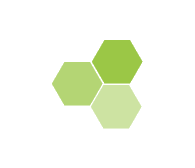Generating PDF document
Please, wait a moment

Too much time loading?
Reload the page and try again.
Please, wait a moment

Too much time loading?
Reload the page and try again.
Description
Other information
Technological Line(s):
- Other UVa laboratories
Applicability of technology:
Yes
Additional Information:
Aims of the ChairThe center was born in 1995 with the support of the CICYT and as a result of the effort of several departments to respond to the needs of technical equipment and equipment. Over time, it has become a center that provides technical su... Read more >
OBJECTIVESOur research is, in a very general way, about the optics of the atmosphere. More specifically, about what is related to our three lines of research:Measurement and modeling of solar radiationDetermination and analysis of atmospheric compone... Read more >
The Laboratory of Instrumental Techniques (LTI) of the UVa is a central service of the University of Valladolid that depends on the Vice-Rector's Office for Research and Scientific Policy. It has its main headquarters on the Valladolid campus and a s... Read more >
In the Cartography and Geographic Information Systems Laboratory we develop three clearly defined lines of action:Training:At the University of Valladolid we have extensive experience in training on Geographic Information Systems. The Geography Depar... Read more >



